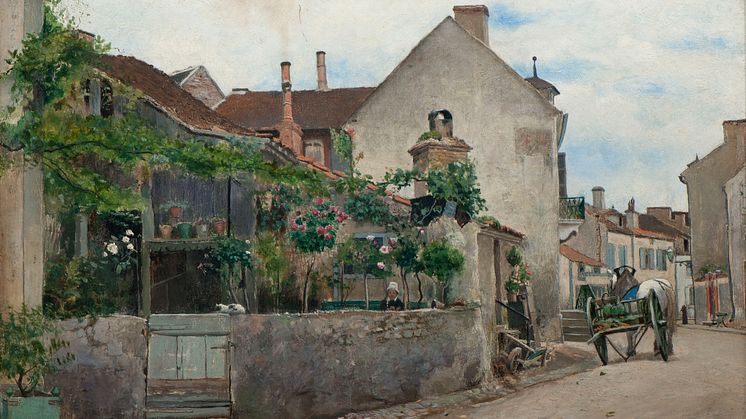
Press release -
New acquisition: Vichy scene by Hjalmar Sandberg
Nationalmuseum has acquired a painting by Swedish artist Hjalmar Sandberg. Sandberg participated in exhibitions in Paris in the 1870s and mixed with the greatest Swedish artists of the age, but is a name that has almost been forgotten. The painting of a scene in Vichy is inspired by French Realism and can be seen in the Modern Life exhibition.
Hjalmar Sandberg’s artistic journey started when he worked in a stationery shop in Stockholm, where he sold materials to students at the Royal Swedish Academy of Fine Arts. He got to know some of the students and in 1877 he travelled to Paris with Carl Larsson to become an artist. He never had any formal artistic training.
The works that Sandberg painted in France show that he was inspired by French Realism and plein air painting. Realism features an interest in everyday and down-to-earth subjects, often portrayed in cloudy weather. The painting from Vichy is very typical of the landscape paintings of the time.
Hjalmar Sandberg participated in a couple of major exhibitions in Paris in 1878 and 1879, but returned to Stockholm and in 1880 was employed as curator for a body called the Association of Nordic Art. He died in Stockholm at the age of only 40.
Many of the Swedish artists who broke through during the 1870s and 1880s came to be the most famous and popular names in Swedish art, including Carl Larsson, Anders Zorn, Bruno Liljefors, Carl Fredrik Hill and Ernst Josephson. Hjalmar Sandberg is one of those who are almost forgotten. The acquisition, made with funds from the Axel Hirsch Foundation, shows that even less well-known artists from this period were able to create extremely good paintings in the spirit of French Realism.
The painting will be displayed in the exhibition Modern Life – France in the 19th Century, which runs until 3 February 2013.
Further information
Per Hedström, Deputy Director, Collections and Swedish National Portrait Gallery, per.hedstrom@nationalmuseum.se, +46 8 5195 4356
Hanna Tottmar, press officer, hanna.tottmar@nationalmuseum.se, +46 8 5195 4390
Press images
www.nationalmuseum.se/pressroom
Categories

